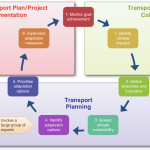In 2008, the United Nations announced that 50 percent of the world’s population now lives in urban areas, a milestone in demographic history. News reports on the subject frequently rephrased this development slightly to say that half of the global population now lives in “cities” and illustrated articles with photos of Mumbai, Shanghai, or New York. These cities are what the UN terms “mega-cities,” urban areas of 10 million people or more. The distinct impression was created that a majority of people lived in very large cities. However, only about 5 percent of world population lives in the largest cities or, more properly, metropolitan areas. The fact that over half of the world’s population live in places termed urban is a notable development, to be sure. But, at the same time, it is useful and important to know just how the term “urban” is defined.
In most countries, a large part the urban population actually lives in relatively small towns and villages. The urban population may also be thought of more as nonagricultural than urban in the way those in industrialized countries would naturally tend to perceive it. In its most recent urbanization estimates and projections, the UN Population Division recognized that when urbanization is discussed, “the focus is often on large cities, cities whose populations are larger than many countries.” The table below gives examples of how countries themselves define urban. The great variation in the urban definition and the size of places deemed urban is readily apparent (see table).
Selected Urban Definitions With Population Size and Other Criteria
| Country | Urban Definition |
| Argentina | Populated centers with 2,000 or more |
| Canada | Places of 1,000 or more* |
| China | Cities designated by the State Council and other places with density of 1,500 or more per sq. km.* |
| India | Specified towns with governments and places with 5,000 or more and at least three-fourths of the male labor force not in agriculture* |
| Japan | Cities (shi) with 50,000 or more* |
| Maldives | Male, the capital |
| Mexico | Localities of 2,500 or more |
| New Zealand | Cities, towns, etc. with 1,000 or more |
| Niger | Capital city and department and district capitals |
| Norway | Localities of 200 or more |
| Peru | Populated centers with 100 or more dwellings |
| Senegal | Agglomerations of 10,000 or more |
| United States | Places of 2,500 or more, urbanized areas of 50,000 or more* |


